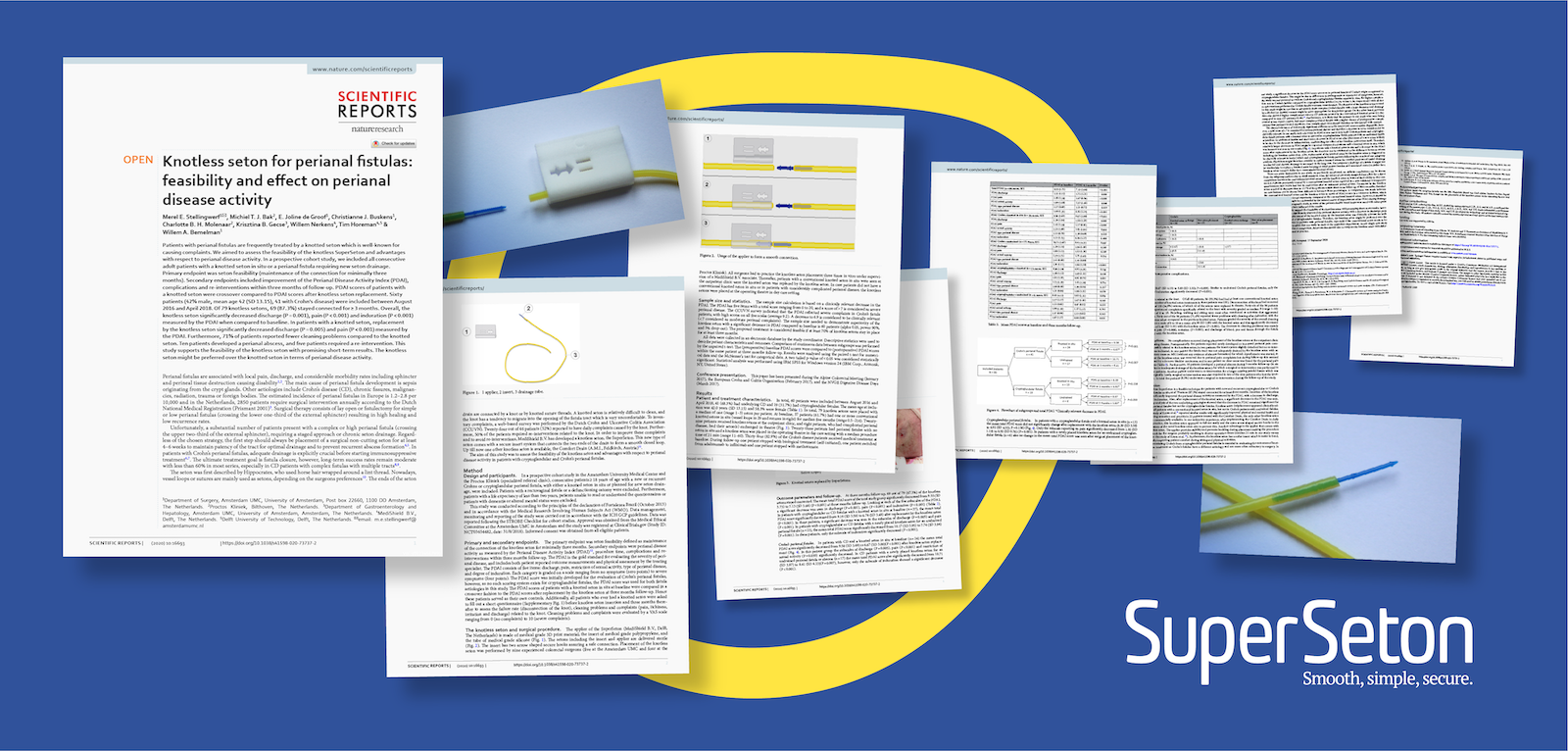News
Smooth, SIMPLE, secure: Treating fistulas the easy way.
Improve your patients' lives - one seton at a time.
Master the SuperSeton at ECC St Gallen
Meet SuperSeton at booth #1 at ESCP in Dublin and claim your free samples
Bright times ahead for SuperSeton
SuperSeton is looking forward to meet you at ECC St Gallen
SuperSeton at events in Australia and Austria
Smooth, Simple, Secure: SuperSeton tensile test
SuperSeton goes global with Bridgehead Global Programme
SuperSeton selected for the HUB program, preparing US entry
We wish you a smooth 2021!
SuperSeton Publication: Scientific Report by Nature Publishing Group
Challenging times - competitive prices
SuperSeton slides smoothly into the new year at ACM Valbella 2020!
SuperSeton continues touring Europe - on to ECC in St. Gallen and EIT Health in Paris
SuperSeton Expands Its European Network - Meet Our New Partners
SuperSeton receives innovation loan from Rabobank
ESCP's visitors embrace the SuperSeton!
Meet us at the ESCP in Vienna and try out the SuperSeton
SuperSeton expanding its European activities
SuperSeton European tour – coming to a congress near you!
SuperSeton production commenced – first shipment in May
Positive reception for SuperSeton at IBD-patient day 2019
Launch of SuperSeton product during DDD Congress in the Netherlands
SuperSeton European Market launch at Alpine Colorectal meeting
SuperSeton CE certified
Super Seton Secures Series-A
SuperSeton secures Rabobank financing
SuperSeton Publication: Scientific Report by Nature Publishing Group
October 20th, 2020This October, a Scientific Report about the clinical validation of the SuperSeton was published in a journal of the Nature Publishing Group. The study validates the feasibility of SuperSeton's knotless seton, and demonstrates how it is preferred over conventional setons. We are proud to have reached this important milestone and thank those that have been involved in the trials.
Please read the summary of the report below or download a pdf of the original publication here.
Knotless seton for perianal fistulas: feasibility and effect on perianal disease activity
M. E. Stellingwerf (1), M. T. J. Bak (2), C. B. H. Molenaar (2), J. de Groof (1), C. J. Buskens (1), W. Nerkens (3), T. Horeman (3,4), W. A. Bemelman (1)
1: Academic Medical Center, Amsterdam (NL), 2: Proctos Kliniek, Bilthoven (NL), 3: MediShield B.V., Delft (NL), 4: Delft University of Technology, Delft (NL)
Aim:
Perianal fistulas are a common incapacitating problem. Many patients are treated by seton drainage to prevent recurrent abscess formation. For centuries, vessel loops or sutures have been used for seton drainage and the knot is well-known for causing complaints. The aim of this study was to determine the feasibility and the advantages of the knotless SuperSeton.
Method:
In this prospective cohort study, we included all patients ≥18 years with drained or undrained perianal fistulas and no defunctioning stoma. Primary outcome was seton failure (loosening of the connection). Secondary outcomes were quality of life measured by the PDAI (‘Perianal Disease Activity Index’) and complications.
Results:
Sixty patients (42% male, mean age 42 (SD 13.16)) were included between August 2016 and March 2018. In total 79 SuperSetons were placed (50 knotted seton replacements). Of these 79 knotless setons, 69 (87.3%) stayed connected for ≥ 3 months. Replacement of the knotted seton significantly decreased pain (P<0.001) and discharge (P = 0.024) measured by the PDAI. Furthermore, 71% reported less cleaning problems. Eight patients developed a perianal abscess. Five patients required a re-intervention.
Conclusion:
The SuperSeton is a feasible novel technique with promising short term results. Drainage of perianal fistulas by the SuperSeton might be preferred over the conventional knotted seton.

